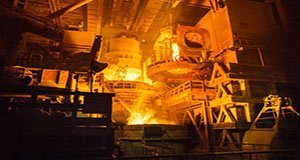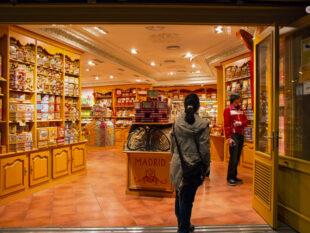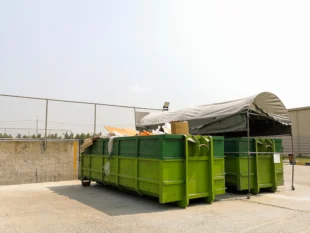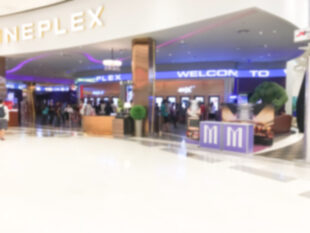Refractories: Market Size, Market Share And Market Leader
by Mashum Mollah Small Business Published on: 26 September 2019 Last Updated on: 06 February 2020

In many ways, the foundation of industrial progress is closely intertwined with the growth in iron and steel industries. This, in turn, is stimulated by an abundant and easy supply of essential raw materials. One of the most important raw materials in both the iron and steel industries are refractories. As ceramic materials, resistant to very high temperatures, refractories are crucial to the manufacturing sector. Be it in the lining of furnaces, kilns, boilers or in space and satellite industry or even in crucibles, molds, and mortar for cooking and baking purposes; refractories cater to a wide array of uses.
The demand for refractories is directly proportional to the rise in the market for steel. With an anticipated compound annual growth rate (CAGR) of 4%, the global refractories market is expected to reach $30.82 billion by 2025. The diverse purposes that refractories serve have boosted their cumulative demand in the foreseeable future, especially in the context of the worldwide expansion of the construction industry. It has also enhanced the overall region-wise growth of the refractories market size. End-user industries from all across the globe have recorded a steady ascension in the demand for different segments of refractories, owing to the large scale infrastructural expansion in different parts of the world.
Refractories Market Size: Facts and Figures
Refractories are integral to almost every high-temperature manufacturing process. For most iron and steel products, there is a fair chance that refractories would be present, even if in a small amount. For instance, in a car weighing 1.3 tons, approximately 10 kgs of refractories would be used in one form or the other.
The uses of refractories are not limited to end-user iron and steel products. Refractories have recorded exponential growth in demand in the cement and lime industries as well as the glass industries. As a result, corresponding to the expansion of the infrastructure and construction industries, the market size of refractories is also booming significantly. Besides, a sizeable fraction of the demand for refractories arises from the non-ferrous metals and petrochemical industries. This, in turn, augments the market size as well as the anticipated growth rates for the refractories market.
The prevalent market dynamics of refractories reflect the highest market share in the Asia Pacific region, followed by Europe.
The cost pressure on the iron and steel industries did put a strain on the market size of refractories in the last decade. Nevertheless, this was countered by the healthy rise of demand in cement, glass and ceramic industries. Consequently, the market size of refractories continues to be promising.
Refractories can further be segmented in terms of alkalinity, form, and application. In terms of alkalinity, the different types of refractories include basic, neutral, and acidic. In terms of form, refractories are divided into monolithic and other unshaped industries, and bricks and other shaped industries. Finally, with respect to application, refractories are used extensively in the construction and automotive industry. That aside, there’s substantial demand for refractories in the ceramics and glass industries as well.
Refractories Market Share
Refractories, by virtue of their wide range of applications, command a significant market share.
The acidic and neutral segments of refractories have more widespread usage, amounting to 58.53% of the market share, due to their resistance to slag and dust corrosion. The basic refractories, however, have recorded steady growth.
In terms of the different forms of refractories, while refractories are central to the development of the brick industry and are used copiously, the monolithic and the unshaped forms of refractories claim the larger market share. With the rising demand in the glass, ceramic, and cement industries for refractories, the graph is expected to further surge with a CAGR of 3.9% by 2025.
Despite the initial decline in the progress of the iron and steel industries, the market share for refractories remains the highest in the iron and steel segment. Estimated at 67.92% of the market share in 2018, the iron and steel segment of the refractory is expected to rise by CAGR of 3.83% by 2025. However, the fastest-growing segments are the glass and cement industries and it is anticipated that they will record a growth rate of 4-6 percent over the forecast period.
With regard to the regional analysis, the Asia-Pacific countries continue to dominate the market for refractories. Due to the massive iron and steel production in countries like China, India, and Japan, the refractories market share of Asia Pacific is anticipated at $14,788.3 million and an ascension rate of 5.10% CAGR. Europe closely follows Asia-Pacific in the market share, holding 24% of the market and projecting a CAGR of 2.4% over the forecast period.
Refractories Market Leaders
Close to 18% of the global supply chain of refractories is held collectively by the market giants like Vesuvius, RHI, Magnesita, Imerys, Kurosaki, Saint Gobain, and Shinagawa. While there are a few new entrants from China, these tier-1 suppliers continue to prevail over the others.
Conclusion
The market for refractories promises to be thriving over a foreseeable period, primarily owing to the development of construction and automotive industries as well as diversification of the glass, cement, and non-mining industries. However, major constraints are posed by reduced specific consumption on account of the rising costs of production. Besides, the stiff competition between the suppliers stagnates the prices and decelerates the growth rates of the markets.
Read Also:







































































































